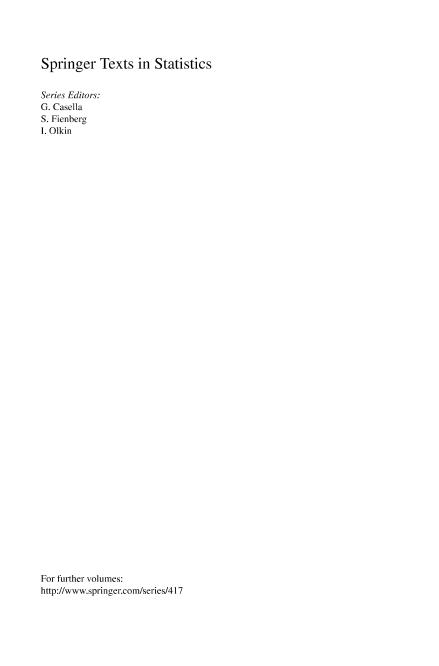An Introduction to statistical learning : with applications in R

Contenido multimedia no disponible por derechos de autor o por acceso restringido. Contacte con la institución para más información.
| Tag | 1 | 2 | Valor |
|---|---|---|---|
| LDR | 00000cam a22000004b 4500 | ||
| 001 | MAP20180018671 | ||
| 003 | MAP | ||
| 005 | 20180705141244.0 | ||
| 008 | 180625s2018 usa|||| ||| ||eng d | ||
| 010 | $a2013936251 | ||
| 020 | $a978-1-4614-7137-0 | ||
| 020 | $a978-1-4614-7138-7 (eBook) | ||
| 040 | $aMAP$bspa$dMAP | ||
| 084 | $a937.42 | ||
| 245 | 1 | 3 | $aAn Introduction to statistical learning $b: with applications in R$cGareth James...[et al.] |
| 250 | $aCorrected at 8th. printing 2017 | ||
| 260 | $aNew York [etc.]$bSpringer $c2017 | ||
| 300 | $a440 p. | ||
| 520 | $aStatistical learning refers to a vast set of tools for understanding data.These tools can be classified as supervised or unsupervised. Broadly speaking, supervised statistical learning involves building a statistical model for predicting, or estimating, an output based on one or more inputs.Problems of this nature occur in fields as diverse as business, medicine, astrophysics, and public policy. With unsupervised statistical learning, there are inputs but no supervising output; nevertheless we can learn relationships and structure from such data. To provide an illustration of some applications of statistical learning, we briefly discuss three real-world data sets that are considered in this book | ||
| 650 | 4 | $0MAPA20080597733$aModelos estadísticos | |
| 650 | 4 | $0MAPA20080602659$aModelos econométricos | |
| 650 | 4 | $0MAPA20080610708$aEstadística de muestreo | |
| 650 | 4 | $0MAPA20080551797$aMuestreos | |
| 650 | 4 | $0MAPA20080593810$aTablas estadísticas | |
| 650 | 4 | $0MAPA20080554156$aEjercicios | |
| 700 | 1 | $0MAPA20180008757$aJames, Gareth | |
| 710 | 2 | $0MAPA20180008764$aSpringer |

